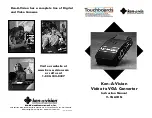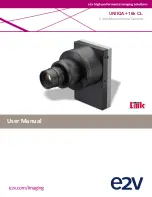
V1.02
Thom Hogan’s Complete Guide to the Nikon D300
Page 678
And a lot of older software ignores that marker or the filename
change! Here are some of the things you’re not told in the
D300 manual:
• Set your working Color Space in all your software
programs to match what you use in the camera.
Most
good digital editing software, including Nikon Capture NX
and Photoshop CS3, has an option (usually in the
Preference
or
Color Settings
menu item) for setting the
Color Space the program uses to display values. Make
sure that you set this! Your Color Space choice should
match the camera setting you choose. (
Note:
a few recent
programs, such as Adobe Lightroom and Apple Aperture
set the largest possible Color Space and convert images to
that, if necessary; these programs have no Color Space
function to set.)
• Learn whether your program recognizes the tag and
filename change or not.
For the most part, JPEG files are
automatically recognized as being sRGB by most older
software, regardless of the camera’s chosen Color Space.
That’s probably because the software engineers simply
followed the original EXIF specification, which used to
state that any EXIF file is in the sRGB Color Space
156
. If
you use AdobeRGB, you may have to set your program to
ignore or discard
the Color Space, or
assign
the correct
one.
• NEF output often works a bit differently.
Nikon Capture
NX assigns the correct Color Space and
attaches the color
profile information
to the TIFF and Photoshop PSD files it
outputs (assuming that you’ve set the program’s
preferences correctly). In other words, it actually passes a
real color profile to other software rather than assume the
software understands the Color Space by file name or EXIF
data methods.
156
The latest EXIF standard allows for two file naming conventions, each of which
defines a different Color Space. A
DSC_####
file would be sRGB, while a
_DSC####
file would be AdobeRGB. Unfortunately, not all software has caught up
to the EXIF standard changes. (Photoshop Elements and CS2 have, by the way.)
















































